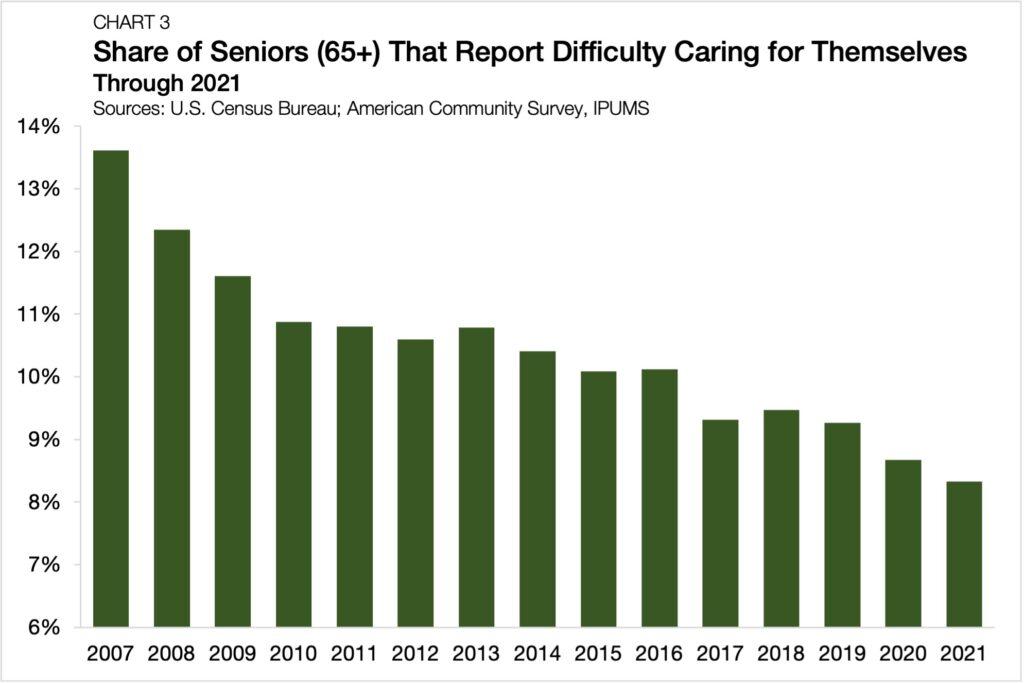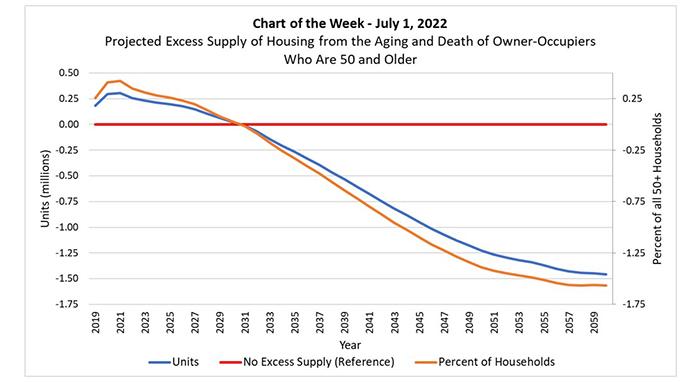As the tides of time reshape the landscape of American living, a compelling question emerges among the baby boomer generation: Is now the moment to downsize? With shifting priorities, evolving family dynamics, and the allure of simpler, more manageable spaces, boomers are rethinking what home truly means. This exploration delves into the latest housing trends among boomers, unpacking the factors driving their decisions and what it might signal for the future of real estate. Whether motivated by financial freedom, lifestyle changes, or the desire for a fresh start, the downsizing movement is more than just a trend-it’s a reflection of a generation redefining their relationship with home.
Table of Contents
- Understanding the Motivations Behind Downsizing Among Boomers
- Evaluating Financial Benefits and Long-Term Security
- Navigating Emotional and Lifestyle Considerations
- Exploring Housing Options That Fit the Boomer Lifestyle
- Practical Steps to Make the Downsizing Transition Smooth
- Frequently Asked Questions
- In Conclusion
Understanding the Motivations Behind Downsizing Among Boomers
As Boomers enter a new chapter of life, many find themselves re-evaluating their living spaces. The motivation to downsize often stems from a desire to simplify, reduce maintenance burdens, and free up financial resources. After decades in larger family homes, the appeal of a more manageable, cozy environment becomes increasingly attractive. This shift is not merely about space-it’s about embracing a lifestyle that prioritizes comfort and convenience.
Financial considerations also play a pivotal role. With retirement on the horizon or already underway, many Boomers seek to optimize their assets to support long-term stability. Downsizing can unlock equity tied up in larger properties, providing a cushion for healthcare, travel, or other retirement goals. Additionally, lower property taxes and utility costs offer practical benefits that enhance overall quality of life.
Beyond finances and upkeep, emotional factors influence this trend. For some, downsizing is a way to declutter both physical and mental space, fostering a sense of renewal and freedom. Others are motivated by proximity to family, access to amenities, or the desire to join vibrant communities tailored to active adults. These diverse incentives reflect a broader cultural shift towards intentional living.
- Simplification: Less maintenance, fewer possessions
- Financial Freedom: Unlocking home equity for retirement needs
- Emotional Renewal: Creating a fresh start with a new space
- Community & Accessibility: Closer to family, healthcare, and social activities
| Motivation | Typical Outcome | Percentage of Boomers |
|---|---|---|
| Financial Security | Increased retirement funds | 68% |
| Reduced Upkeep | Less time on home maintenance | 57% |
| Closer to Family | Improved support network | 45% |
| Community Lifestyle | Engagement in social activities | 38% |

Evaluating Financial Benefits and Long-Term Security
When considering downsizing, many Boomers weigh the immediate financial relief against the promise of long-term stability. A smaller home often means reduced mortgage payments, lower property taxes, and decreased utility costs, freeing up monthly income for other priorities such as travel, healthcare, or investing. These savings can provide a cushion that enhances financial flexibility and quality of life.
Beyond day-to-day savings, downsizing can unlock substantial equity. Selling a larger family home typically releases a significant amount of capital that can be redirected toward retirement funds, annuities, or other income-generating assets. This liquidity not only boosts financial security but also offers peace of mind knowing there’s a financial buffer against unexpected expenses.
Key financial benefits to consider include:
- Lower maintenance and repair costs
- Reduced property tax liabilities
- Potential for increased investment income
- Simplified budgeting and cash flow management
| Financial Aspect | Before Downsizing | After Downsizing |
|---|---|---|
| Monthly Housing Costs | $2,500 | $1,400 |
| Annual Property Taxes | $6,000 | $3,200 |
| Home Maintenance | $4,000 | $1,500 |
| Equity Released | – | $150,000 |
Long-term security also comes from a home that better matches evolving lifestyle needs. A more manageable space often means less stress and more time to focus on personal goals and relationships. Additionally, the flexibility gained from freeing up assets can help Boomers adapt to changing health or family circumstances, ensuring a more resilient and comfortable future.

Navigating Emotional and Lifestyle Considerations
Deciding to downsize is not just a practical choice-it’s a deeply personal journey that intertwines with emotional ties and lifestyle shifts. For many Boomers, the family home is a treasure trove of memories, a symbol of years spent building a life. Letting go of that space can evoke a complex mix of nostalgia and anxiety. Acknowledging these feelings is essential before making a move, as emotional readiness often dictates how smoothly the transition unfolds.
On the lifestyle front, downsizing often means embracing simplicity and mobility. Smaller spaces require thoughtful curation of belongings, encouraging a decluttered and purposeful way of living. This change can open doors to new opportunities, such as travel, hobbies, or even relocating closer to family or urban amenities. However, it’s important to balance this newfound freedom with practical considerations like accessibility, community support, and healthcare proximity.
Key emotional and lifestyle factors to weigh include:
- Attachment to the current home and neighborhood
- Desire for lower maintenance and upkeep
- Compatibility of new living spaces with current and future needs
- Social connections and opportunities for engagement
- Financial implications and stress reduction
| Emotional Consideration | Lifestyle Impact |
|---|---|
| Sentimental attachment to home | Potential for increased mobility and adventure |
| Fear of losing independence | Opportunity to simplify daily routines |
| Concerns about social isolation | Access to vibrant community and social activities |
Exploring Housing Options That Fit the Boomer Lifestyle
As baby boomers consider their next chapter, housing choices have expanded far beyond the traditional single-family home. Many are drawn to communities that offer a blend of convenience, social engagement, and manageable maintenance. Whether it’s a chic urban condo or a quiet cottage in a rural setting, the key is finding a space that aligns with a lifestyle rich in freedom and flexibility.
Popular options gaining traction among boomers include:
- Active adult communities that foster wellness, hobbies, and social connections.
- Multigenerational homes designed to accommodate family support and shared experiences.
- Co-housing neighborhoods emphasizing collaboration and shared resources.
- Smart homes equipped with technology that enhances safety and ease of living.
Choosing the right fit often means balancing independence with access to amenities and healthcare. Many boomers prioritize locations near cultural hubs, public transit, and green spaces, which offer both stimulation and relaxation without the burdens of extensive upkeep.
| Housing Type | Key Feature | Ideal For |
|---|---|---|
| Condominium | Low maintenance, amenities included | Urban lifestyle lovers |
| Active Adult Community | Socially vibrant, wellness-focused | Health-conscious individuals |
| Multigenerational Home | Flexible space, family-centered | Those seeking close family ties |
| Co-housing | Shared resources, collaboration | Community-oriented boomers |

Practical Steps to Make the Downsizing Transition Smooth
Embarking on the journey of downsizing calls for a clear plan and thoughtful preparation. Start by assessing your needs and priorities. Consider not just the size of your future home, but also its location, accessibility, and proximity to family, healthcare, and community amenities. This holistic view ensures your new space supports your lifestyle and well-being.
Next, tackle the art of letting go. Decluttering can feel overwhelming, but breaking it down into manageable chunks helps. Create categories such as keep, donate, sell, or recycle, and remember that less truly is more when it comes to creating a comfortable, low-maintenance home.
- Start early: Give yourself ample time to sort through belongings without pressure.
- Digitize documents and photos: Save space and preserve memories.
- Enlist help: Whether from family or professional organizers, support can ease the process.
Finally, plan the logistics carefully. Coordinate moving dates, hire trusted professionals, and notify important contacts of your change of address. Don’t forget to personalize your new space with familiar touches-these create a sense of home and continuity amidst change.
| Step | Tip | Benefit |
|---|---|---|
| Evaluate Needs | List essentials vs. luxuries | Streamlined decision-making |
| Declutter | Sort into four categories | Reduced stress and clutter |
| Organize Move | Book movers early | Smoother transition |
| Personalize | Bring favorite items | Comfort & familiarity |
Frequently Asked Questions
Q&A: Is Now the Time to Downsize? Boomer Housing Trends
Q1: Why are many Boomers considering downsizing their homes now?
A1: As Boomers approach or enter retirement, priorities are shifting. Many seek less maintenance, lower costs, and a lifestyle that better fits their evolving needs. The desire for more manageable spaces and freeing up home equity is prompting a growing number to contemplate smaller, more efficient homes.
Q2: How have recent economic and housing market trends influenced Boomer decisions?
A2: Fluctuations in home prices, mortgage rates, and the broader economy play a big role. Rising home values have increased equity for many Boomers, making downsizing financially attractive. Conversely, market uncertainties can cause hesitation, leading some to delay moving until conditions stabilize.
Q3: What types of housing are Boomers gravitating toward when they downsize?
A3: Many are opting for single-story homes, condominiums, or active adult communities that offer amenities tailored to their lifestyle. Accessibility, proximity to healthcare, and social opportunities are key factors influencing their choices.
Q4: Are there emotional challenges Boomers face when deciding to downsize?
A4: Absolutely. Leaving a long-time family home can evoke feelings of nostalgia and loss. The transition often requires balancing sentimental attachment with practical considerations, making the decision deeply personal and sometimes difficult.
Q5: How does downsizing impact Boomers’ financial security?
A5: Downsizing can unlock home equity, reduce living expenses, and simplify budgeting-advantages that support financial stability in retirement. However, transaction costs and potential tax implications mean careful planning is essential to maximize benefits.
Q6: Is downsizing the right choice for all Boomers?
A6: Not necessarily. While many benefit from smaller, more manageable living spaces, others prioritize staying in familiar neighborhoods or homes with sentimental value. Individual health, family dynamics, and personal preferences ultimately guide the decision.
Q7: What should Boomers consider before making the move?
A7: Beyond finances, Boomers should assess lifestyle goals, accessibility needs, community resources, and the timing of the move. Consulting real estate professionals and financial advisors can provide valuable insights to ensure a smooth transition.
Q8: How might Boomer downsizing trends shape the housing market in the coming years?
A8: Increased demand for smaller, accessible homes could spur new developments and renovations tailored to aging buyers. This shift may also influence urban planning, emphasizing walkability and community amenities that support active, independent living.
This Q&A explores the multifaceted considerations Boomers weigh when deciding whether to downsize, offering a balanced view of the trends shaping their housing choices today.
In Conclusion
As the dust settles on shifting family dynamics and evolving financial landscapes, the question of whether now is the right time to downsize remains deeply personal and complex. Boomer housing trends reveal a tapestry of choices-some driven by the allure of simplicity and freedom, others by necessity or opportunity. Ultimately, the decision to downsize is less about timing and more about aligning one’s living space with current needs and future aspirations. Whether embracing a cozier nest or holding on to a longtime home, Boomers continue to redefine what “home” truly means in this new chapter of life.

